The bright stars of the Turkish carnation decorate many garden plots and garden areas. Growing and caring for fragrant beauties is accessible to beginning gardeners. Numerous photos convey the beauty of the scattering of multi-flowered caps.
Perennial Turkish carnation
Turkish clove is a herbaceous crop with a straight, knotty stem 25-70 cm high. The stem can be simple or slightly branched.
The leaves are opposite, petiolate, pubescent, 6-9 cm long and 1-2 cm wide. They have a bright green, blue-green, sometimes with a red tint.
Photo of Turkish carnation
Many simple, semi-double or double five-petalled small flowers (1.5-3 cm in diameter) are collected in fragrant inflorescences resembling umbrellas or hats with a diameter of up to 12 cm. And therefore, the flowering of carnations, even in the photo, looks more magnificent than that of other large-flowered crops. The patterns on the petals are located both on the border and on the entire petal.
How to grow Turkish cloves in the garden
In the first year of development, the carnation grows its root system and forms a lush rosette of leaves. In the second year, flowering begins with the formation of additional rosettes of leaves. This allows Turkish carnations to grow and bloom in one place for up to 6 years.However, summer residents and owners of private houses often grow garden varieties as biennials.

Growing cloves from seeds
Growing unpretentious Turkish carnation through seedlings speeds up the onset of flowering of your favorite flower. Preparations for this procedure should begin in late March - early April.
The soil for sowing cloves is prepared from river sand and humus soil in equal proportions. Instead of river sand, you can add vermiculite. The prepared soil must be disinfected with a solution of potassium permanganate.
- The container for seedlings is scalded with boiling water, and drainage made of expanded clay, fine crushed stone or coarse river sand is laid on the bottom. Substrate is poured on top.
- The seeds are buried 1 cm according to a 3x3 cm pattern. The crops are moistened with a sprayer.
- The seedling container is covered with film and placed in a room with a temperature of +18°... +20°C, periodically moistening the soil from a sprayer with settled water.
- The film is removed after germination, the container is moved to the most illuminated place with a decrease in ambient temperature by 2-3°C. This will prevent the seedlings from being pulled out. If necessary, provide additional lighting.
- When two true leaves appear, they are picked into individual pots.
- Further care consists of regular watering and loosening the soil around the seedlings.
14 days before transplanting plants into open ground, hardening of seedlings begins. Every day the cloves are taken out into the fresh air, gradually increasing the hardening time.
Seedlings are transplanted into unprotected soil when the threat of late frosts has passed, in late May - early June.
Sowing seeds directly into the ground
If you don’t have time to plant seedlings, it is possible to sow Turkish cloves directly into open ground. This is done in early summer or mid-late autumn.
It is easier to care for carnation plantings in sunny areas or in partial shade. In sandy or loamy soil, 7 kg of humus and 250 g of ash per 1 square meter should be added in advance. m, as well as mineral supplements: 1 tbsp. nitrophoska and agricola for flowering plants per 1 sq. m.
Before planting, dig up the soil to a depth of 30 cm. If the soil is dry, water it abundantly. Then the flowerbed is covered with non-woven material for 2 weeks.
The procedure for sowing seeds in open ground is as follows:
- Make shallow furrows 1-1.5 cm deep in the soil, leaving a distance of 15 cm between them. Sprinkle with warm water.
- Place seeds in each groove every 2-3 cm.
- Sprinkle the furrows with soil and lightly compact them. Cover the top of the crops with non-woven material, which is removed after the first leaves appear.
- After 3 weeks, thin out the seedlings, maintaining a distance between them of 6-8 cm. If all the plants are strong and developed, then they are planted in other containers.
Winter sowing can be applied to Turkish cloves. Dry seeds are sown in dry soil shortly before the first frost. Autumn crops must be covered with mulch.
The crop can also reproduce by self-sowing if the seeds have time to ripen by autumn. In order not to depend on the vagaries of the weather, it is worth collecting some of the seeds and sowing the cloves yourself.
Important! When Turkish cloves are propagated by seeds, not all varietal characteristics are preserved. In varieties with double flowers, some of the plants turn out to be non-double, and in low-growing varieties, some of the plants grow tall.
Caring for carnations in the garden
To successfully grow carnations in a garden plot, it is important to follow the following rules of agricultural technology:
Watering - 2 times a week, since Turkish cloves do not like stagnant water.Increasing the frequency of watering is permissible only during drought with soil moisture control. Watering is done only at the root to avoid sunburn on the leaves and flowers.
Loosening is necessary after each moistening. This will prevent crusting on the soil. It is advisable to combine loosening with weeding.
Weed removal - an important procedure at the initial stage of bush growth. As the green mass grows, the cloves create a dense carpet that will inhibit the development of weeds.
Faded inflorescences should be shortened to a height of 10-15 cm from the ground. This stimulates the formation of new shoots, which will bloom again by autumn.
Seedlings need to be fed 3 times per season.
- The first time is in the spring, with nitrogen-containing fertilizers, when the shoots reach a height of 10-12 cm.
- The second time - at the bud stage with phosphorus-potassium fertilizers: 1 tbsp. l. superphosphate and potassium sulfate per bucket of water.
- The third time - after flowering.
Advice! Turkish carnation is not afraid of frost, but it will overwinter more comfortably under the cover of peat or humus about 8 cm thick.
In favorable conditions and with proper care, the life expectancy of Turkish carnation is 4-6 years, otherwise – 2-3 years.
Reproduction
Turkish cloves are propagated not only by seeds, but also by layering, green cuttings, and dividing the bush. The vegetative propagation method helps preserve your favorite varieties if:
- the seeds have not ripened;
- the seeds disappeared during the winter;
- the seeds did not germinate due to the cold spring.
Propagation by green cuttings
To propagate Turkish carnations using green cuttings, parts from bushes of any age are used. The tops obtained from pinching seedlings are suitable for these purposes. In June–July, short shoots with leaves from the stems of the second year of life are cut into cuttings.
To prepare and plant carnation cuttings in a seedling bed, you need to:
- remove the lower leaves, if there is sufficient length of the stem;
- pinch the top, leaving 2-4 leaves on the cutting;
- dip the lower part of the cutting into the root former;
- prepare a substrate that should be loose, neutral acidity;
- plant the cutting, deepening it to the lower leaves. Place in light shade;
- water;
- cover with film.
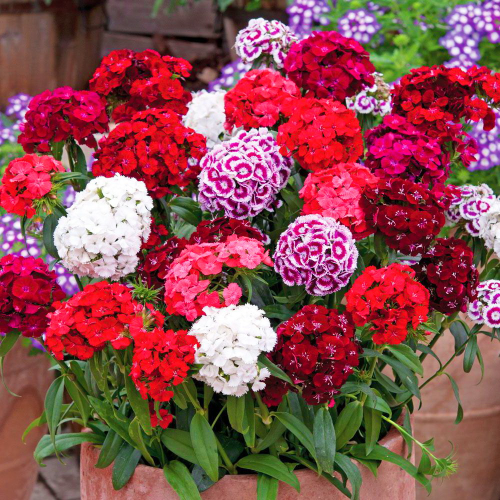
Important! If you plant the cuttings in a greenhouse, rooting will take place much faster.
When caring for carnations from cuttings, do not forget about the need to form stems. It is necessary to remove the growing point along with the upper leaves.
Reproduction by layering
Attentive flower growers often observe how, at the slightest contact with the soil, carnation shoots take root. If you pin overwintered branches to the ground in the spring, the bush will become more powerful by summer. This is the result of the formation of additional roots on layering. Subsequently, the bush can be divided into several independent plants.
You can also dig in the cuttings at the end of July - beginning of August:
- The stems are bent to the ground and covered with earth. To increase the number of roots, shallow cuts can be made on the stem.
- The top of the stem is directed upward and tied to a peg.
- After 5 weeks, rooting occurs, the cuttings are separated from the mother bush and replanted.
Advice! In order for carnations to develop in one place for up to 10 years, it is necessary to sprinkle young shoots with long bare stems with fertile soil.
Reproduction by dividing the bush
Dividing the bush is the most effective method of propagation when it is necessary to transplant carnations to other places in the garden.
For division, choose a large plant, which is simply divided into several parts. This procedure can be performed throughout the growing season.
Turkish carnation in garden design
It is better to grow carnations in garden plots in a composition of flowers that require the same type of care, soil, and the same fertilizing.
Low growing varieties Suitable for decorating alpine slides, for decorating borders, lawns, sidewalks, garden paths. They emphasize the attractiveness of low-growing carnations with the help of companion plants: sage, marigolds, Carpathian bell, alyssum, nigella damask.
Medium-sized varieties and the shapes of Turkish cloves look laconic in mixborders. For example, with gypsophila graceful, nasturtium, prickly cleome, feverfew.
Tall varieties They decorate retaining walls and are used in single plantings. They stand out among Eschscholzia, Liastris, hydrangeas, and lupine. It is less suitable for carnations to be adjacent to dahlias, decorative sunflowers, gladioli, tulips.
Turkish carnation in flower beds in the garden
Landscape design uses not only planting flowers in open ground. Turkish carnation grows wonderfully in pots and flowerpots that decorate terraces, verandas, and gazebos.
Diseases and pests
In favorable conditions, Turkish carnation practically does not get sick and is not damaged by insects. But since such conditions cannot always be created, you should remember about diseases and pests of the flower. Diseases characteristic of Turkish cloves:
Diseases
Fusarium - fungal disease. Infection occurs when using organic fertilizers, such as manure.
Signs of illness – yellowing and withering of the leaves, redness of the stem, flowers do not bloom or do not bloom completely, the stem near the ground and the roots of the plant rot.
Fighting methods - the disease cannot be treated. infected bushes should be destroyed. As a preventive measure, healthy flowers and the soil around them are treated with a fungicide twice with an interval of 2 weeks, or the soil is disinfected three times a season with a dark solution of potassium permanganate.
Rust - fungal disease. It appears during rainy seasons, with excess humidity, as well as as a result of excess nitrogen or lack of potassium.
Signs of illness - the plants look depressed, the leaves become covered with brown swellings with yellow spots, the stems dry out and become brittle.
Fighting methods — soil treatment with a 1% solution of Bordeaux mixture, a solution of the drug XOM.
Pests
Early in spring, a young flower becomes prey for rodents. Mice damage the above-ground part of the plant. Mousetraps or poisoned baits are used to control rodents.
In summer, the plant is attacked by root-knot nematodes. The defeat is manifested by deformed, dull foliage and swollen petioles. The solution to the problem is the destruction of diseased plants and disinfection of the soil.
Insect pests such as, spider mite, weevil, aphid, eat the leaves and feed on the sap of the stems. To combat them, harmless means are used: infusions of onion peels, potato tops with the addition of green soap.
Photos of the most beautiful varieties of Turkish carnations
Dynasty Orchid F1 (DYNASTY ORCHID)
- Perennial plant with double flowers, up to 50 cm high.
- Blooms in the year of sowing, long-lasting, abundant flowering
- Winters well in open ground
Green Trick (Dianthus barbatus Green Trick)
An original plant, the main feature of which is round bracts the size of a tennis ball. Which never bloom and always remain green.
Indian Carpet
This variety is often used as a ground cover plant.Its height does not exceed 12-15 cm.
Nigrescens (Nigressens, black)
This variety is distinguished by its very dark, almost black color. Shoot height is 30-40 cm.
Dash
A perennial variety of Turkish carnation with different colors. Plant height is 30-40 cm.
Heimatland
Quite a tall plant, 45-50 cm, with classic flower colors.
Conclusion
Growing a multi-colored carpet from Turkish cloves is not at all difficult. If you meet the flower's requirements for soil, location and care, the variety of varieties and colors no worse than in the photo will delight the owner.
Continuation of the topic
- Growing gaillardia from seeds
- Planting and caring for astilbes in open ground
- Anemones: planting, growing and propagation
- How to grow aquilegia from seeds
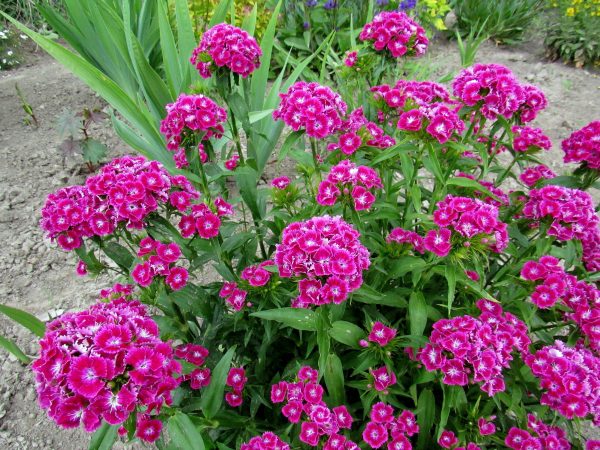
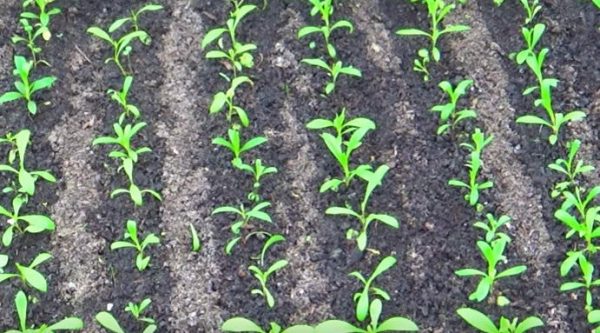
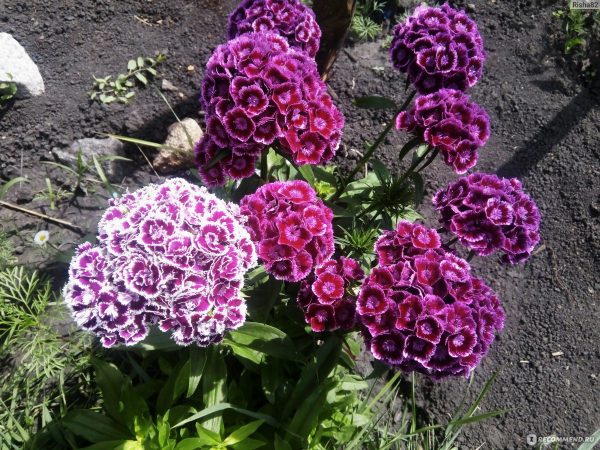
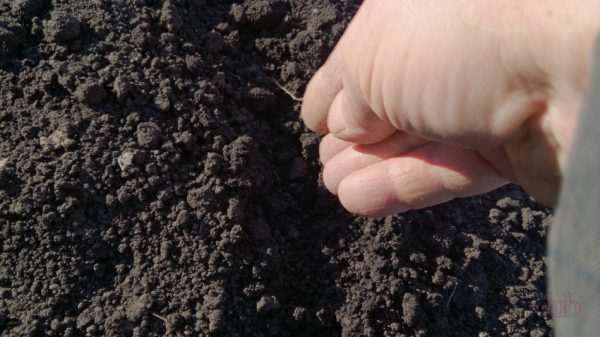
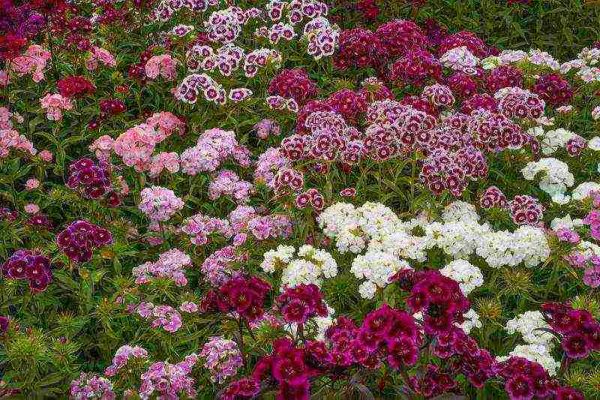
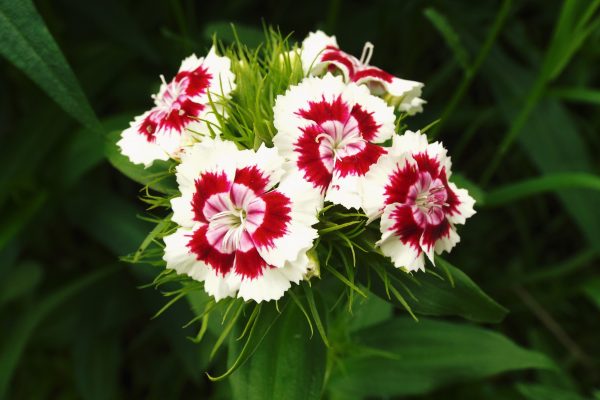
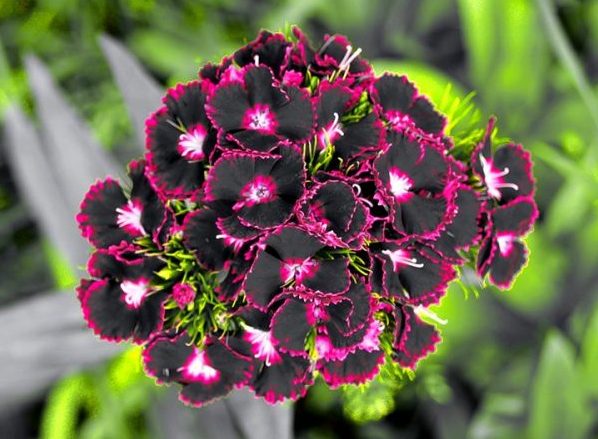
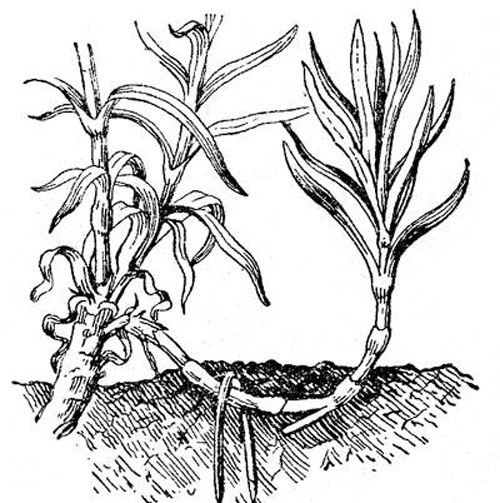


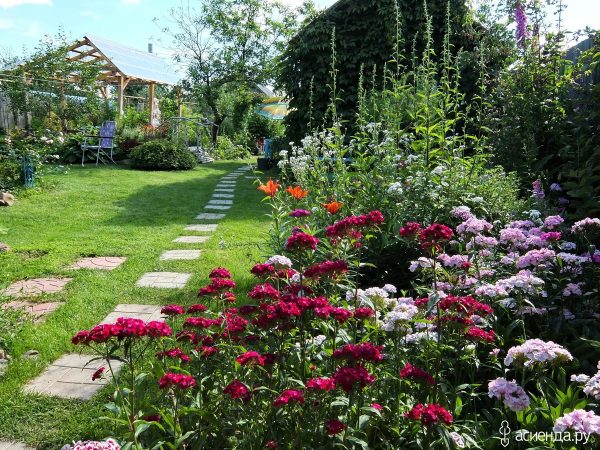
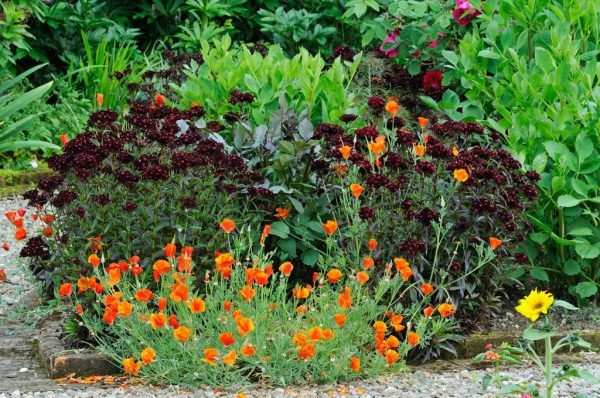
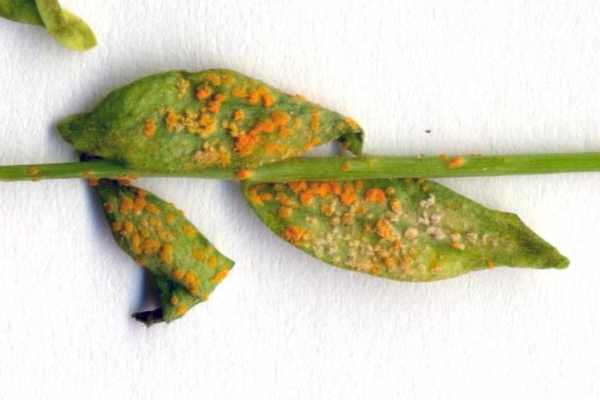
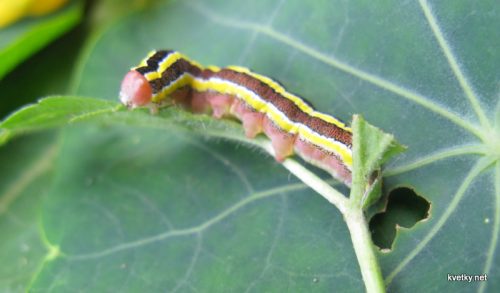
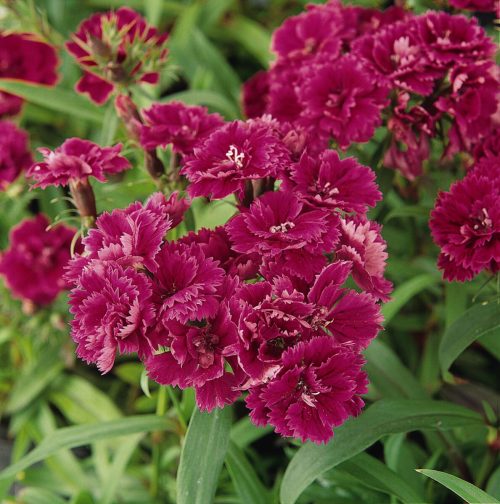
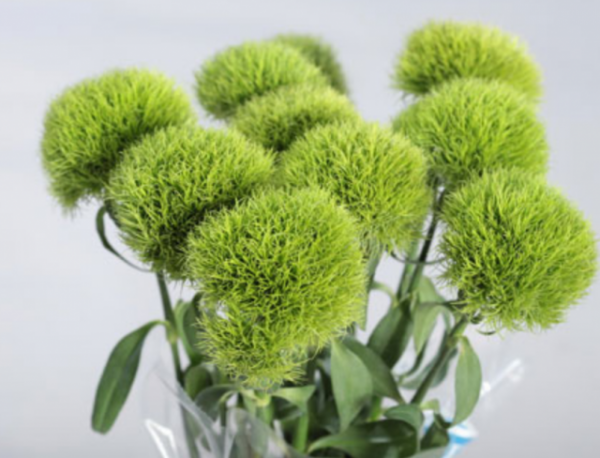
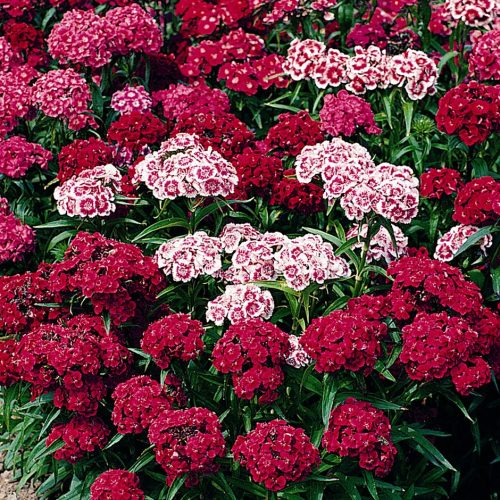
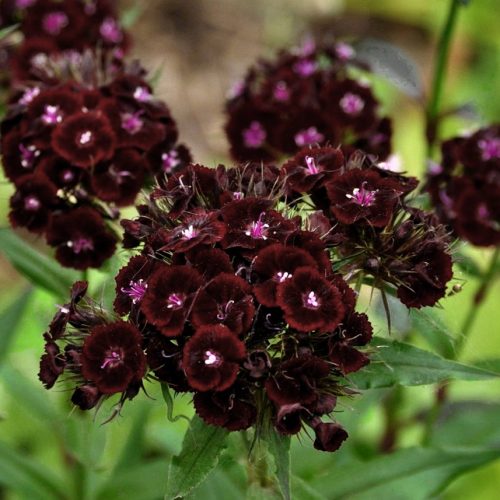
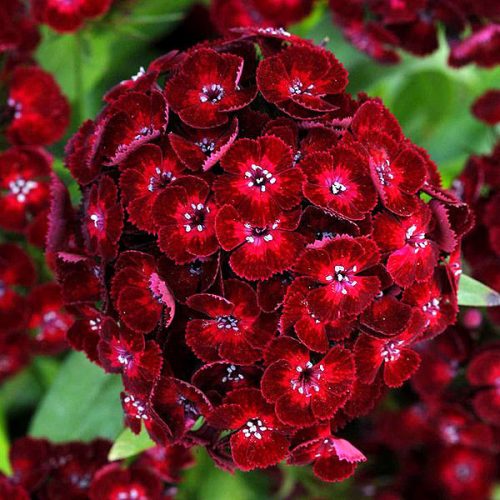
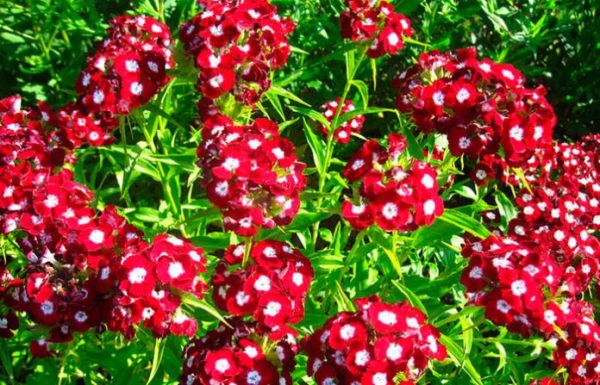

 CUCUMBERS NEVER GET SICK, I'VE BEEN USING ONLY THIS FOR 40 YEARS! I SHARE A SECRET WITH YOU, CUCUMBERS ARE LIKE THE PICTURE!
CUCUMBERS NEVER GET SICK, I'VE BEEN USING ONLY THIS FOR 40 YEARS! I SHARE A SECRET WITH YOU, CUCUMBERS ARE LIKE THE PICTURE! You can dig a bucket of potatoes from each bush. Do you think these are fairy tales? Watch the video
You can dig a bucket of potatoes from each bush. Do you think these are fairy tales? Watch the video
 How our fellow gardeners work in Korea. There is a lot to learn and just fun to watch.
How our fellow gardeners work in Korea. There is a lot to learn and just fun to watch. Eye trainer. The author claims that with daily viewing, vision is restored. They don't charge money for views.
Eye trainer. The author claims that with daily viewing, vision is restored. They don't charge money for views. A 3-ingredient cake recipe in 30 minutes is better than Napoleon. Simple and very tasty.
A 3-ingredient cake recipe in 30 minutes is better than Napoleon. Simple and very tasty. Therapeutic exercises for cervical osteochondrosis. A complete set of exercises.
Therapeutic exercises for cervical osteochondrosis. A complete set of exercises. Which indoor plants match your zodiac sign?
Which indoor plants match your zodiac sign? What about them? Excursion to German dachas.
What about them? Excursion to German dachas.